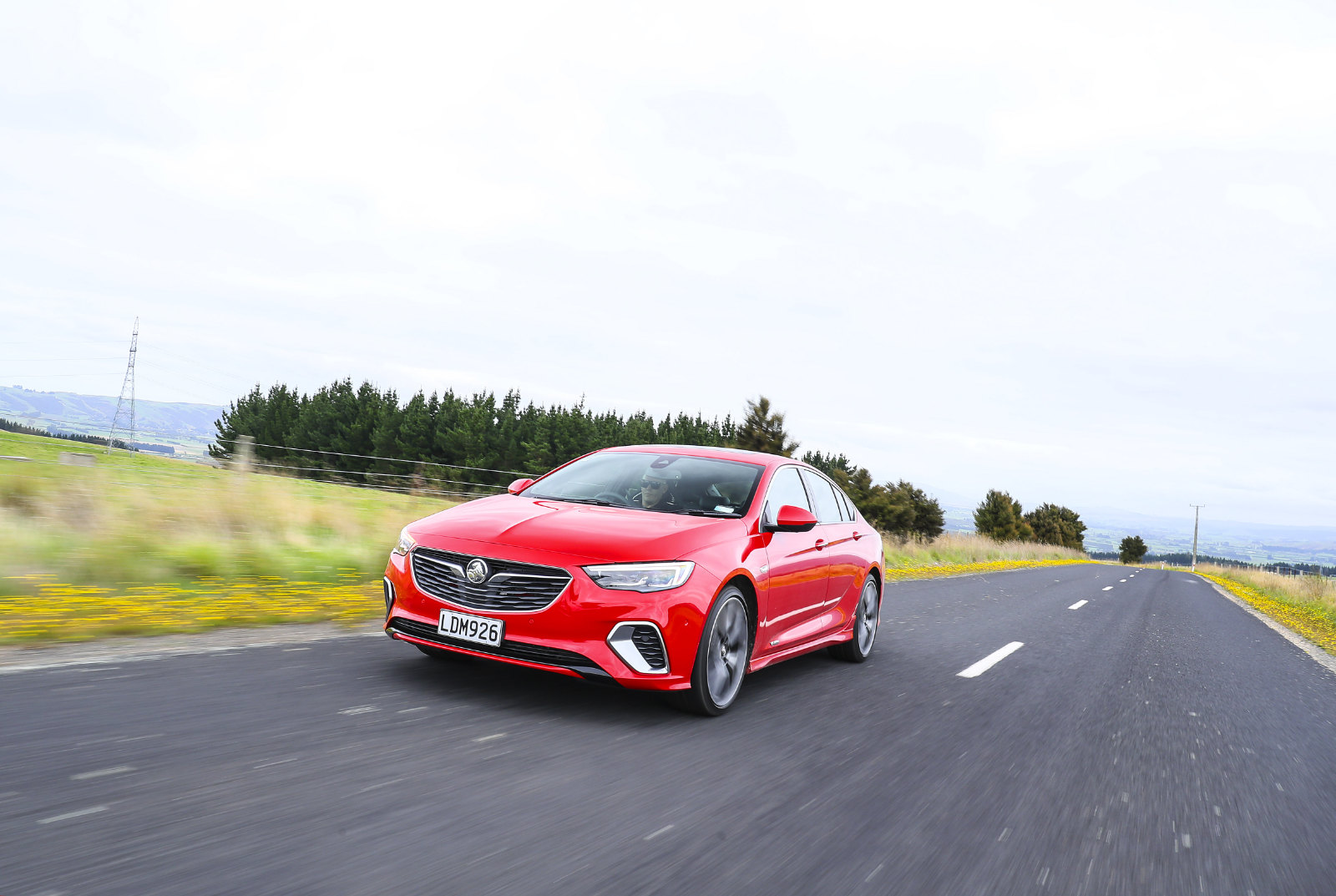
LIVING Jack Yan samples four of the 2018 Holden Commodore range, which takes the storied nameplate convincingly into the next decade
Photographed by the author and Simon Watts
Main image by Simon Watts
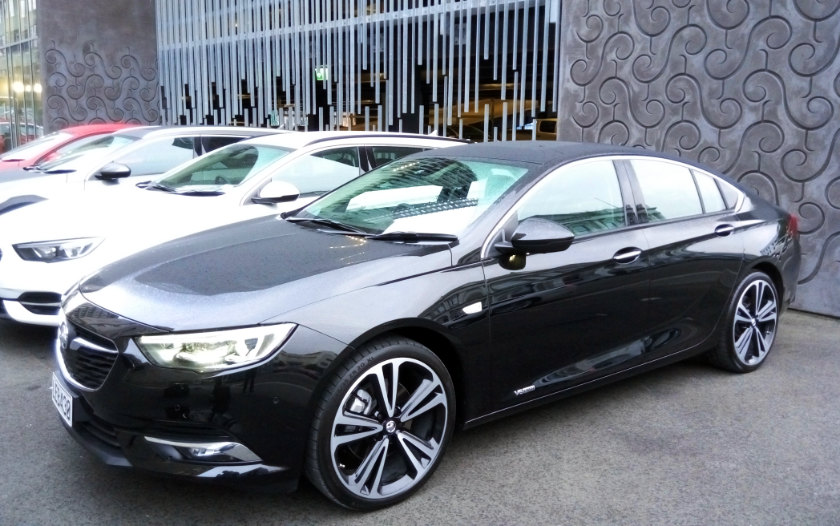
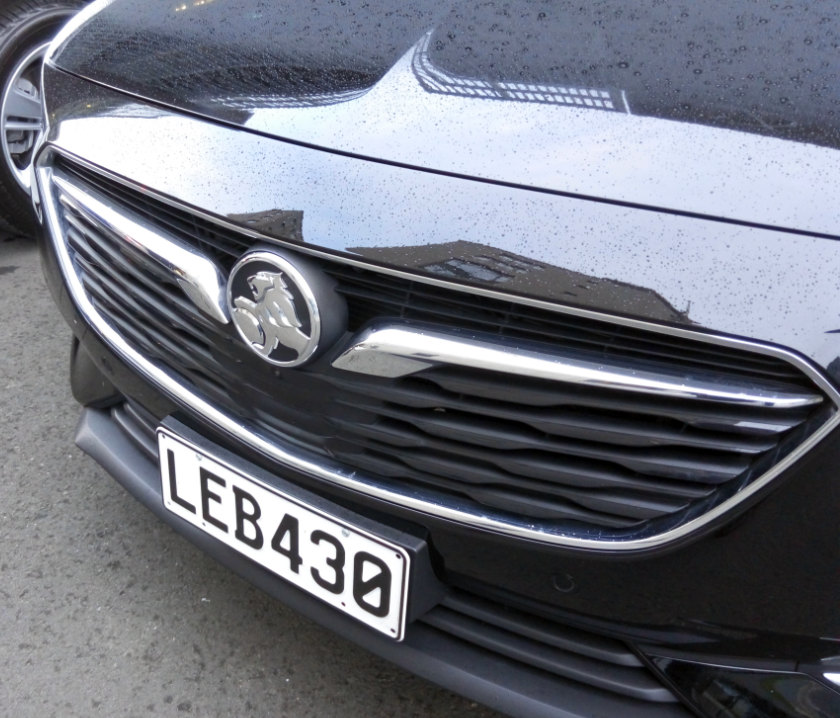
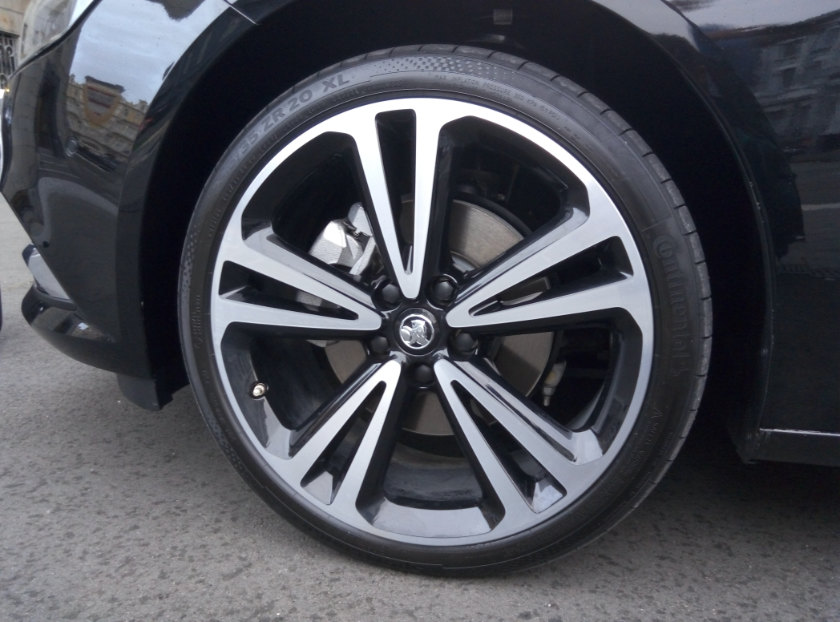
 Style first In terms of looks, the Calais V is the Holden Commodore sedan to have, with 20-inch wheels and premium trim
Style first In terms of looks, the Calais V is the Holden Commodore sedan to have, with 20-inch wheels and premium trim
Jack Yan is publisher of Lucire.
The most anticipated large-car launch of the year—that of the Holden Commodore—took place last week with media invited to drive the range from Dunedin to Queenstown, with challenging roads so General Motors could show off just how good the cars are. There’s a sense of “back to the future” here: 40 years ago, Holden launched the original Commodore, which, dynamically, was a giant leap ahead of the larger HZ range of Kingswoods and Premiers. Thanks to Commodore’s German origins mated to Australian powertrains, Holden was on to a winner. Holden feared that buyers wouldn’t understand this shift to global development, and the original tagline read, ‘Commodore. It’s a Holden.’
Fast forward to more recent times, GM allocated funding to its Australian arm to develop an all-Australian Commodore, the VE, which launched in 2006; and it’s that generation that the new ZB-series replaces. As in 1978, here is a more sensibly sized Commodore, with German engineering, and enough Australian input to make it different from the Opel Insignia B that it’s based on. And once again, there’s a leap ahead of the larger VE and VF, not just because the sedan gains a liftback rear, but there are noticeable gains in efficiency and dynamics that help propel the Commodore back into the running against the competition. Holden has managed to create a big car that is very competent, even in its most basic form.
Let’s get the size out of the way. If you read website comments, this is one of the bugbears, yet ZB is sized between the old VT and the recently deleted VF. Perhaps more importantly for diehard big-car fans, its dimensions are very close to the last Ford Falcon’s, so the ZB could hardly be called small. David Johnson, the Commodore’s lead development engineer, admits there is less width than the VF, but stresses that the new Commodore, being on a front-wheel-drive platform, doesn’t have the space-robbing complication of a transmission tunnel. There’s more knee room with the new car, and front headroom is identical. The centre is where the width has been taken out, so driver and front passenger should still feel the same as they did with the previous model. The ZB’s body-in-white is 200 kg lighter than the smaller Insignia A’s, helping again with efficiency, and, of course, fuel economy.
As to front-wheel drive, most buyers don’t know the difference, and it turns out that the decision to go with the Insignia B as the Commodore’s successor was made in December 2011, long before the closure of GM’s Australian production plants. Even if Australian production had continued—something made economically impossible when Ford announced the closure of its plant, in an economy that relied on three major manufacturers—this is still the car that would have been made.
This is a sensible decision, not just because it helps GM consolidate three model lines on to a single base (Opel Insignia, Buick Regal, and Holden Commodore), but because there’s only so much growth you can do for a model line before it gets too large for everyday buyers. In Europe, the Opel Senator couldn’t continue beyond its model cycle because it would have got too big for European buyers; it was succeeded by the Omega B, a car that replaced both the smaller Omega A and the Senator B. The Omega B then found itself in the same boat, replaced by the Signum, which was really a version of the Vectra C, one model line below the Omega. You could argue that making the Commodore any bigger—and the tendency is for each generation to be bigger than the last—would have made it too big. The writing was on the wall: big-car sales have been dropping, and Holden’s passenger-car sales now only make up 30 per cent of its total in New Zealand (SUVs make up 40 per cent). Although Commodore accounted for 85 per cent of the large-car segment in New Zealand, especially as its rivals met their fates, you don’t want to make it irrelevant to buyers. There is plenty of action in the class represented by the Toyota Camry and Volkswagen Passat, and those cars have helped define the size of the sector.
Despite some saying that Commodore shouldn’t be the name of the new car, Lucire argues that GM would have been foolhardy to do anything else. GM has had a history of abandoning good nameplates and having to start building goodwill from scratch: Holden’s mid-sizers have had names such as Torana, Sunbird, Camira, Apollo, Vectra, Epica and Malibu. In that time, Toyota has only fielded Corona and Camry in the same sector in this market, and Ford of Europe has fielded Taunus (or Cortina, depending on where you are reading this), Sierra and Mondeo. Commodore means continuity, and, to be fair, GM wasn’t the one who made the first move to withdraw from Australia. There is sentiment, of course, since Holden is known as ‘Australia’s own car’, even if when Australia’s own car was developed and launched in 1948, the company had been in American ownership for nearly two decades.
Seventy years on, that American ownership has meant that GM was able to get its Opel division, then under its umbrella, to engineer the new car, with the high-tech features expected from one of the world’s largest car makers. Top models have massaging seats (they are very good, although there are fewer modes than on the Mercedes-Benz S-Klasse), a 360-degree, bird’s-eye-view camera to aid parking, ventilated and heated front seats, adaptive cruise control (which works exceptionally well), and wireless charging (we hadn’t experimented with this, unfortunately). Lesser models still have autonomous emergency braking, a tailgate that can open hands-free (kicking below the bumper), and lane-keep assist. Commodore also has adaptive headlights, which can dip with oncoming traffic, or leave a dark spot so as not to dazzle the vehicle in front. There is also active pedestrian protection, where the bonnet pops up to protect a person in the unlikely event they were struck. But one of the best cases for the new Commodore is that the entry-level LT model comes in at NZ$45,990, a price drop of thousands, for a far better, German-manufactured car.
It’s that base model that we found one of the stars of the Commodore range. In Australia and New Zealand, the two-litre turbo engine, the flagship unit in Europe, is the base powerplant. Developing 260 PS (191 kW), this is an incredibly willing unit, with excellent mid-range torque, and a quick response to the throttle, making it perfect for long-distance driving and overtaking. The nine-speed automatic shifts seamlessly, with GM’s software determining which gear to use based on telemetry. In our drive of the LT, we found nothing to fault just how well the software works. The LT has 18-inch wheels and the test car looked very smart in white. While there’s a smaller seven-inch screen with only six icons, cloth seats, and simpler instrumentation, you don’t feel that this is a Clayton’s Commodore in the way that the Executive or Evoke signalled. The interior is well screwed together and the car feels like a complete package. It drives and performs well, with predictable front-wheel-drive handling, and very level cornering. The Commodore gives an effortless drive.
continued below


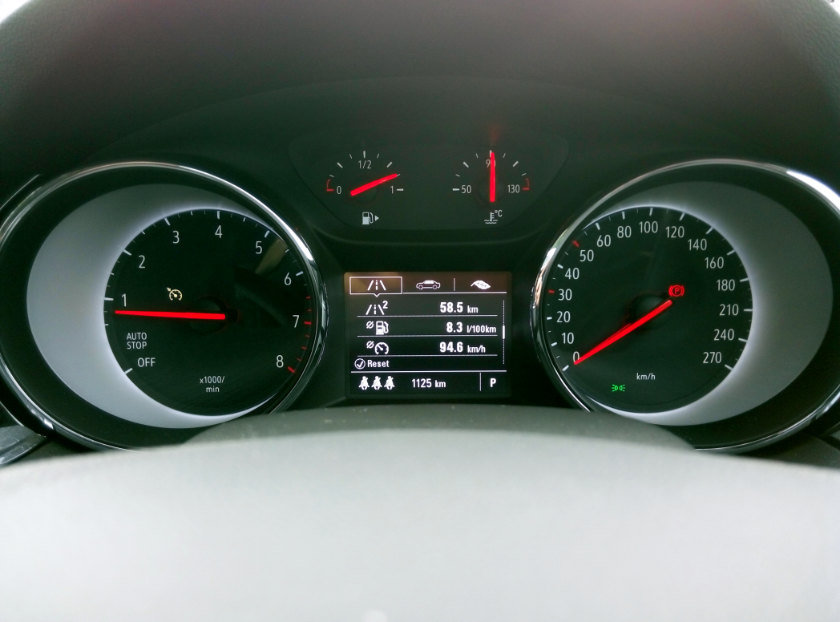 Entry-level Commodore LT is actually one of the stars—decent two-litre motor developing 260 PS
Entry-level Commodore LT is actually one of the stars—decent two-litre motor developing 260 PS
The Insignia body is a tidy fastback, with a prominent grille and a very European rear; the lights almost look like they come from a more premium brand than Opel (and since the car has to be the Buick Regal for China and North America, it’s only fitting they look fancier). As detailed in our launch article, there are sculpted lines on the sides that are tasteful, and GM notes that there’s a Sweepspear, a Buick term and part of that brand’s design language. If you’re driving a ZB Commodore now, you will be driving something that looks confident and smart, its geometric lines conveying sleekness and solidity. The car looks low, the windscreen is rakish, and like the VB in 1978, it’s a generation ahead of its predecessor. At launch, Opel claimed a drag coefficient of 0,26, making this the most streamlined Commodore ever.
Our chief criticism of the styling is that the ZB isn’t a six-light design: the C-pillar is rather large, and the glasshouse isn’t as big as the chrome window trim tries to suggest. Holden might argue that there are cameras and active safety, but we do seem to be in an era where natural visibility isn’t as big a priority as in the early 1980s. It’s no worse than the C-pillar size on the next Camry, which is probably Holden’s biggest threat in this sector; buyers will have to decide whether they want Euro-taut or Japanese-swoopy when it comes to looks; initial reports are that the Camry doesn’t feel as special inside. It is fresher than Ford’s CD391 Mondeo, which looks heavy by comparison, as does Hyundai’s Sonata. In Europe, Renault’s Talisman is the rival in the looks’ department, but as that model isn’t sold in right-hand drive, Holden has one fewer worry here. There’s also the Škoda Superb, which is very roomy with a Teutonic sense (as Škoda is a Volkswagen subsidiary), has plenty of goodies, and comes at a decent price, but Commodore undercuts it at the bottom end and outguns it in performance.
The LT and RS wagons, also with the two-litre turbo, drive just as well, and Holden should be commended for these cars not having any sense of additional bulk. Rearward visibility is slightly better in that the D-pillars, while chunky, aren’t as obstructive as in the sedan. The tailgate does shut with the touch of a button, something missing on all liftback sedan Commodores, even, curiously, the Calais V.
continued below
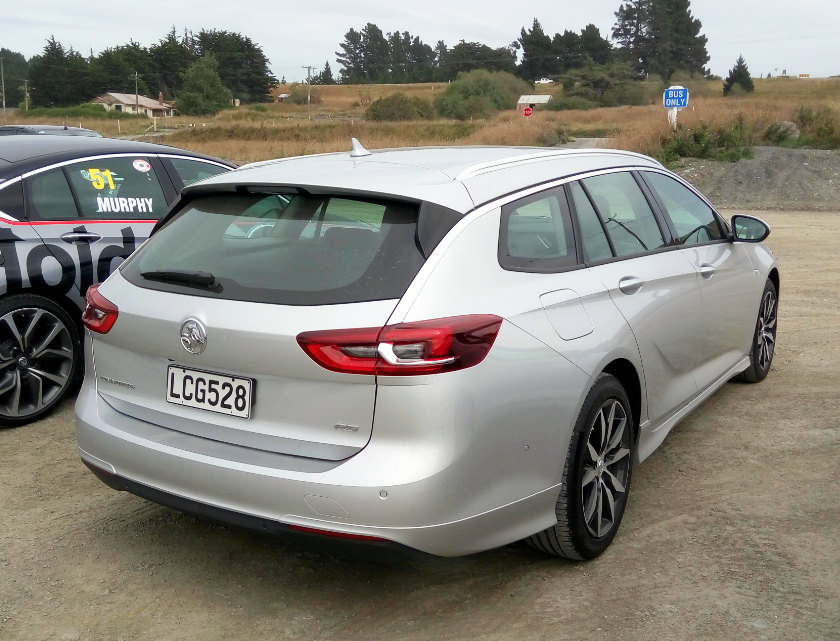 RS wagon is the next step up from the LT wagon—it might be the one family buyers will go for
RS wagon is the next step up from the LT wagon—it might be the one family buyers will go for
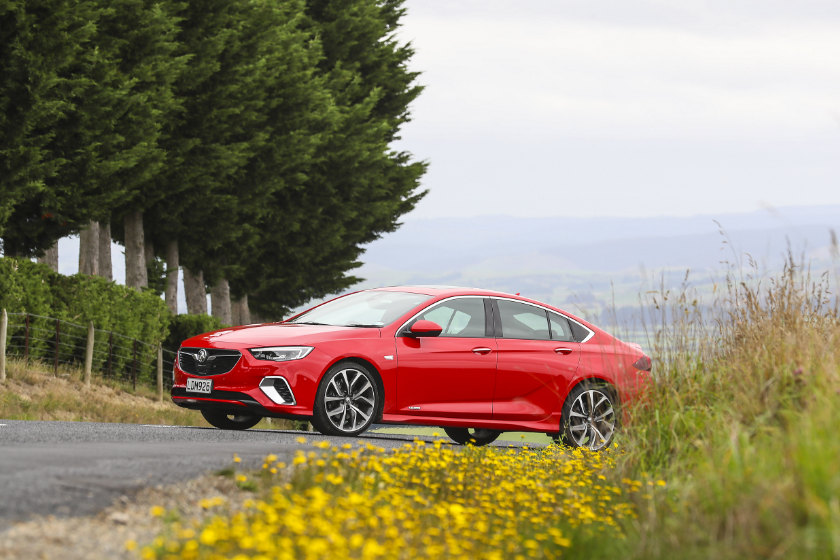
 Simon Watts
Simon Watts
Sporty VXR, not sampled by Lucire, takes the V6 and adds a performance mode
It was Holden that transformed the suspension to suit Australian and New Zealand roads, the company dealing with noise, vibration and harshness, ride and handling, economy and powertrain; with the sale of Opel to Peugeot, all right-hand-drive validation is done by GM’s Australian arm.
It was also Holden that insisted the V6 be part of the Insignia B programme from an early stage. This engine, with 320 PS (235 kW), is shared with the GMC Acadia and the Cadillac XT5, and in these parts, comes with all-wheel drive in the Commodore. Those traditionalists who want their Commodores to tow and have power going to the rear wheels won’t be disappointed. The Twinster AWD system, which made its début in the Insignia B in Europe, is a GKN torque- vectoring system similar to that in the Ford Focus RS. The Commodore V6—that’s the RS-V, Calais V, and the Calais V Tourer (more on this later)—is front-wheel drive by default, but torque is redistributed to suit driving and the conditions, the system detecting throttle position and road surface and adjusting to suit. When we tested the Commodore Calais V, the luxury flagship of the sedan range, there was definitely more grip from the rear, more so when switched to Sport mode, which reduced understeer. The steering also became more responsive and weightier with the Sport mode, making the drive more rewarding.
The Calais V does have the mod-cons of massaging seats, 20-inch wheels (the biggest in the range), a far quieter ride, a head-up display, electric sunroof, plus a larger, eight-inch touchscreen on our test car, including sat-nav and digital radio. The digital dashboard can be customized, with different readings in the centre: the resolution, and the display in Univers, is excellent, with the light being gentle on the eyes yet still sharp and readable. At NZ$61,990 the Calais V compares well with other similarly equipped rivals, the one minus being the same hard plastic lower in the dashboard. However, that extra power, without turbocharging, doesn’t come on as quickly as on the four, and you’d need to keep the revs up. If you’re a driving enthusiast, the fours are excellent; if you must be cosseted and want the latest tech, then the Calais V is the place to be.
continued below
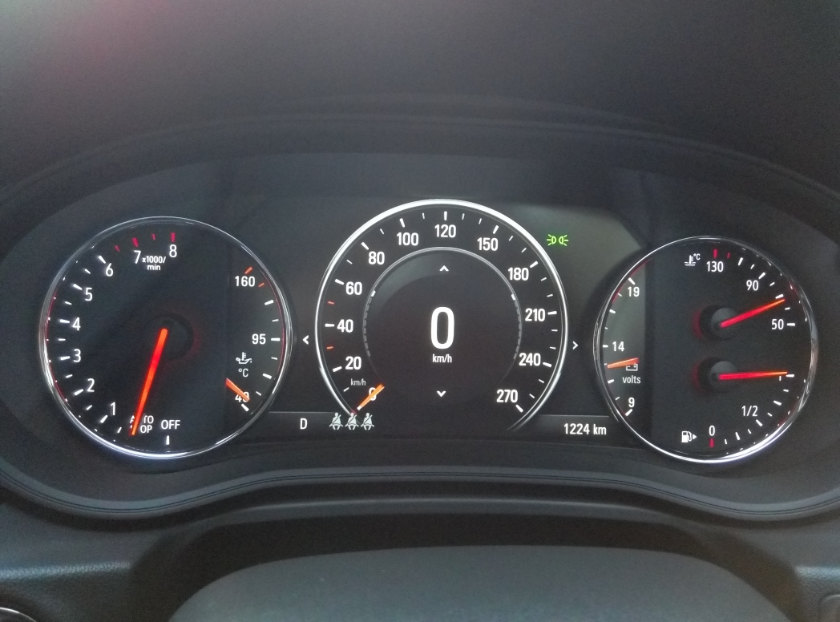 Calais V’s centre dial is digital, yet remains sharp and easy on the eyes
Calais V’s centre dial is digital, yet remains sharp and easy on the eyes
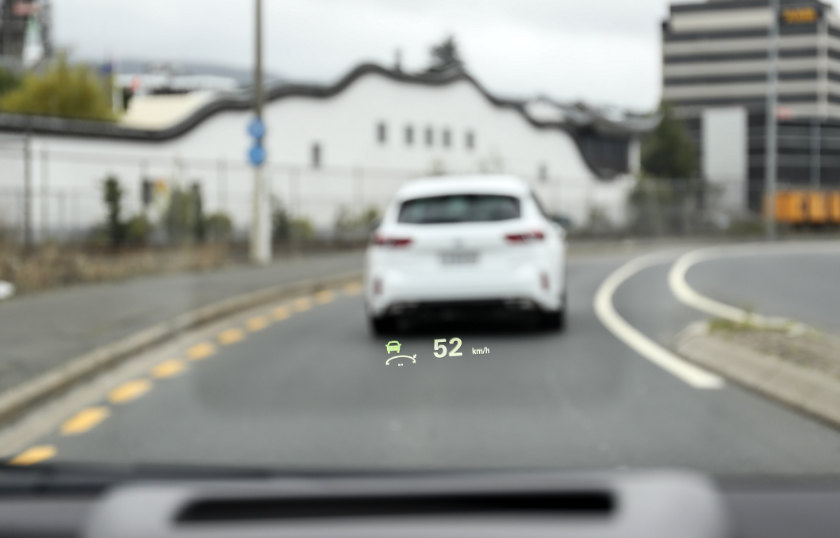 Simon Watts
Simon Watts
Head-up display is clear and useful
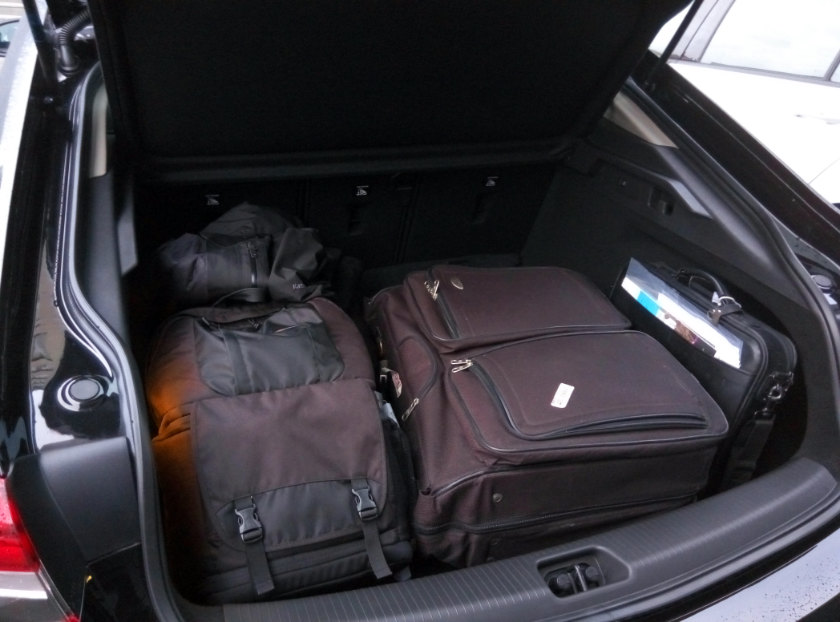 Boot space is ample—we’re sharing this with Drivelife
Boot space is ample—we’re sharing this with Drivelife
Except when it isn’t. Ina Economopoulos, Holden New Zealand’s national product manager, identifies a lifestyle segment who might otherwise opt for SUVs, and this explains the Calais V Tourer, the local edition of the Opel Insignia Country Tourer. This is a higher-riding wagon in the mould of the old Holden Adventra, and it’s the European idea of what an SUV could be. Holden, after all, is served in the SUV stakes with the Equinox and, soon, the Acadia, which are more truck-like in appearance; hard-core off-road fans have the Trailblazer. Tourer, meanwhile, covers that Volvo V60 and V90 Cross Country market, one where the Subaru Forester and Volkswagen Passat Alltrack compete.
We’re fans of the raised station wagon as a format, and the Calais V Tourer, also tested by Lucire, blends the tech of the sedan with a tougher stance. It will win fans of those who want something different from the more boxy alternatives, and GM has done well to blend the sleekness with a go-anywhere look. There is slightly more road noise from the rear when Twinster sends the torque rearward, but it drives like the other Commodores, and the higher ride height isn’t noticeable. The full-length panoramic roof helps with the interior ambiance, and we can foresee lifestyle buyers opting for the Tourer.
A more comprehensive test will reveal more about the Commodore, but our first driving impressions from Dunedin to Queenstown are positive. We’d love to see Holden consider a four-cylinder turbo AWD Tourer, and, although we didn’t try it, the regular Calais with the four could be the best blend of power and comfort. At the top end, an all-out turbo V6 model might appeal to the old VF SS crowd. That may all have to wait till a model-year or even mid-cycle update, which begs the question of where that car will come from.
Ed Finn, Holden’s corporate affairs’ manager, wouldn’t be drawn on speculation about where future Commodores might come from. Opel, under Peugeot, has committed to building the Insignia, Commodore and Regal for many years to come. However, we may have to ask who sells the most of this vehicle, and right now, the Chinese market is happy to buy 100,000 Regals a year.
No one in the US is complaining that the Chinese-made Buick Envision isn’t as well screwed together as the American product, and complaining about ‘Made in China’ is about as passé as complaining about ‘Made in Japan’ 25 years ago. GM may consider North American production: the previous Regal had come out of Canada for North America.
Whatever the case, the company will make its decision in 2019. And you thought our times were interesting. The future Commodore could have an even more interesting parentage at the beginning of next decade, once Holden sees through its current portfolio of 24 new or facelifted models between 2015 and 2020. For now, enjoy the Commodore’s rebirth—it’s better than the car it replaces, and a real contender in the D-segment. •
 Simon Watts
Simon Watts
 High and low: the Commodore Calais V Tourer (top and left) aims for the Passat Alltrack market, while RSV wagon targets the mainstream
High and low: the Commodore Calais V Tourer (top and left) aims for the Passat Alltrack market, while RSV wagon targets the mainstream
Related articles hand-picked by our editors
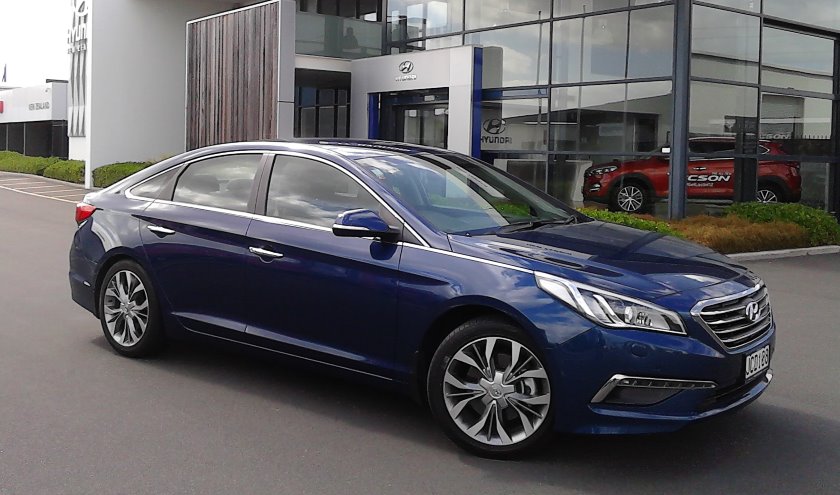
Blue desire
With the trajectory of Hyundai, it was inevitable that they would come up with a big car that would be more desirable than the Japanese and Australian competition. That day is upon us with the Sonata 2·4 Élite, says Jack Yan
Photographed by the author, some images on a Voigtländer Bessamatic Deluxe
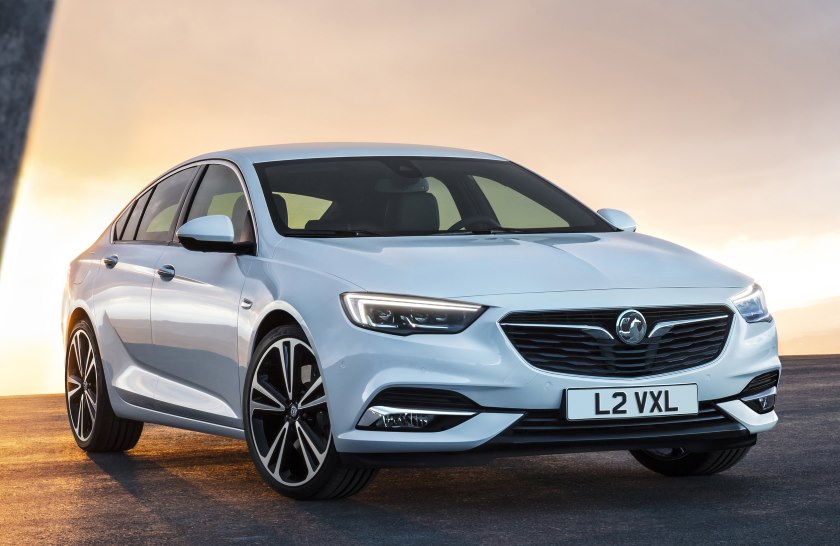
Opel previews Insignia B, with clues to next Holden Commodore and Buick Regal
GM has shown official photographs of the Opel Insignia B, which will be sold in the UK as a Vauxhall and Australasia as the Holden Commodore
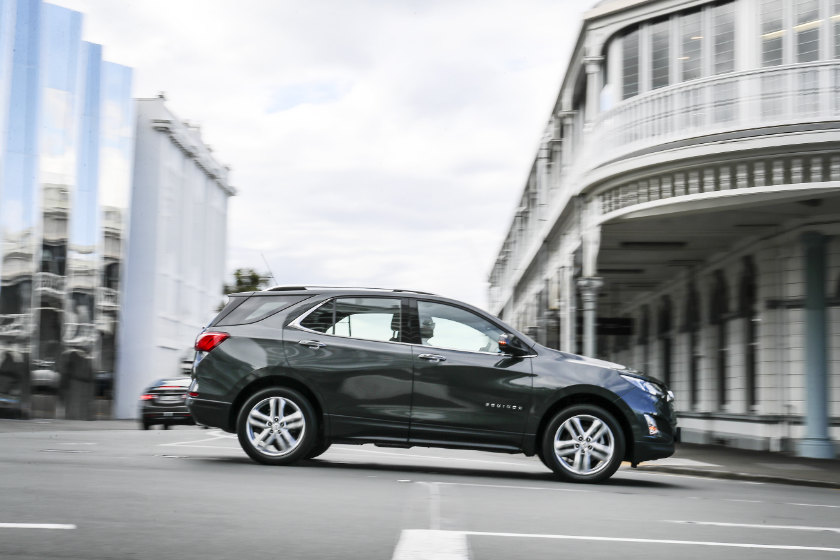
Holden releases Equinox SUV, with segment-leading performance and value
Holden’s new SUV may share a model name and base with its Chevrolet sister, but plenty of work has gone in to make it one of the most complete and competitive vehicles in the segment for Australia and New Zealand, writes Jack Yan
Advertisement
Copyright ©1997–2022 by JY&A Media, part of Jack Yan & Associates. All rights reserved. JY&A terms and conditions and privacy policy apply to viewing this site. All prices in US dollars except where indicated. Contact us here.